KAIST
BREAKTHROUGHS
Research Webzine of the KAIST College of Engineering since 2014
Spring 2024 Vol. 22
An innovative accident-tolerant fuel cladding material with excellent corrosion resistance has been developed. This material can prevent hydrogen explosions even in severe accident conditions, thus significantly enhancing the safety of nuclear power plants.
During the Fukushima accident, a large amount of hydrogen was generated due to the rapid corrosion of Zircaloy fuel cladding, which resulted in hydrogen explosion and radioactivity release into the environment. Since then, the development of better cladding materials, or accident tolerant fuel (ATF) cladding, has been a worldwide research focus to reduce corrosion and mitigate the consequence of severe accidents. As a near-term solution, corrosion-resistant coatings on current cladding have been developed and are ready to be implemented. Nonetheless, the development of innovative materials to replace current fuel cladding would further enhance the safety of commercial nuclear power plants in the long term.
Recently, an innovative ATF cladding material, advanced duplex stainless steel (ADSS), has been developed in the Nuclear and High Temperature Materials Laboratory led by Prof. Changheui Jang in the Department of Nuclear and Quantum Engineering at KAIST. The ADSS alloys were designed to overcome the shortfalls of the existing high-temperature steels while enhancing the machinability, strength and ductility, and irradiation resistance by properly controlling Al and Ni contents. The design concept of ADSS alloys is summarized in Figure 1 below.
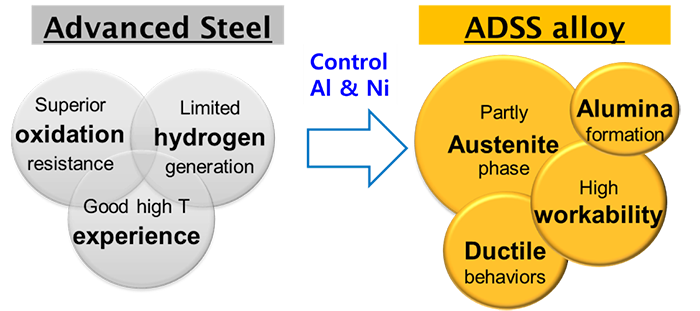
The performance of ADSS alloys has been extensively evaluated and the results were published in reputable international journals after peer review. First, the corrosion resistance of ADSS alloys was evaluated and compared with current Zircaloy cladding and advanced steels. In the simulated severe accident conditions, the corrosion resistance was more than 100 times better than Zircalloy and comparable to the advanced steel. In normal operating conditions, ADSS alloys showed excellent corrosion resistance with very little weight change, while advanced steel showed greater weight loss. Second, the ADSS alloys showed a good combination of strength and ductility, showing greater than 1,000 MPa of tensile strength and ~ 25% of elongation, which would be advantageous for thin tube fabrication. In the event of severe accidents, creep and burst behavior is critical for the integrity of fuel cladding. In such conditions, ADSS alloys showed more than 10 times better creep resistance than Zircaloy at 1,000 oC. During the burst test, the ADSS tube remained intact without burst while tubes made of Zircaloy and advanced steel failed before the end of the test. The schematics and the results of creep and burst tests are shown in Figure 2 below. Finally, a recent study by other researchers independently reported excellent radiation and thermal aging resistance of ADSS alloys due to the presence of nano-sized precipitates, which is a clear advantage when being used as nuclear fuel cladding material.
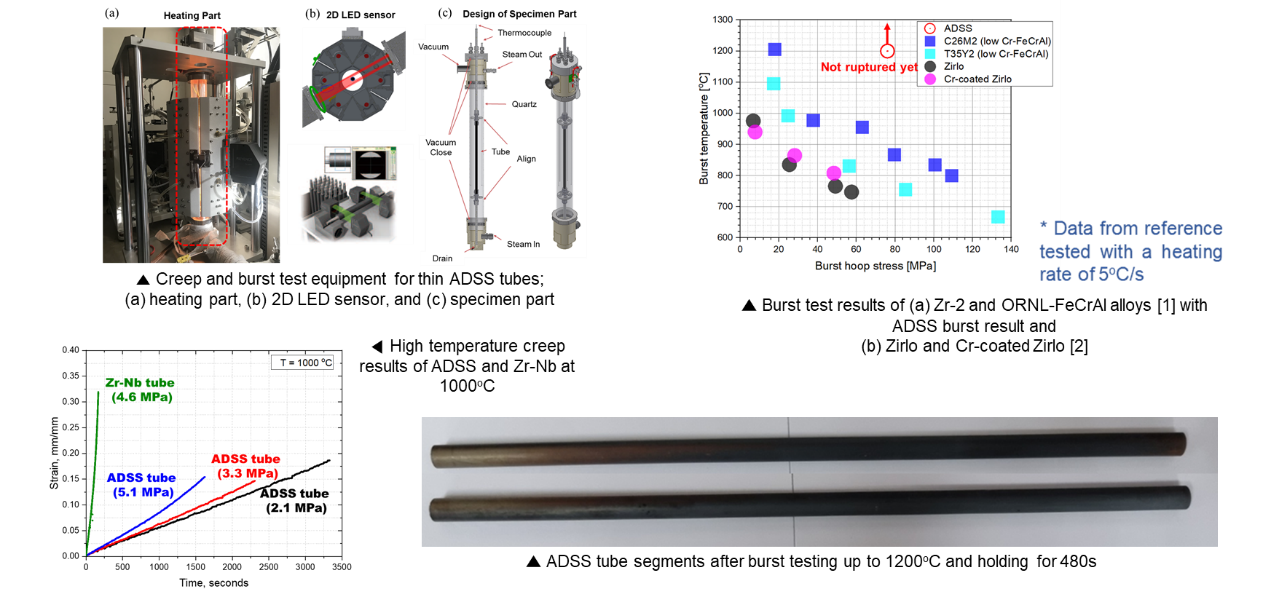
Based on the research results, patents for the ADSS alloys have been registered in Korea, China, and the US. Currently, further studies on irradiation resistance and thermal aging behavior are ongoing aiming for the optimization of the composition and microstructure of ADSS alloys. The details of research status and achievements related to ADSS alloys can be found on the following website.
Most Popular
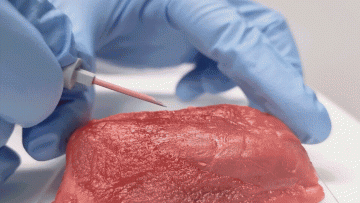
An intravenous needle that irreversibly softens upon insertion by body temperature
Read more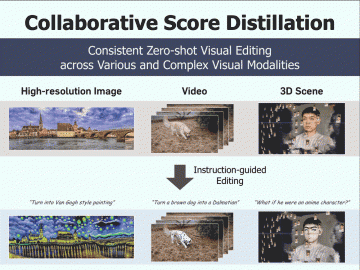
Consistent visual editing of complex visual modalities: videos and 3D scenes
Read more
SUPPORT enables accurate optical readout of voltage signals in neurons
Read more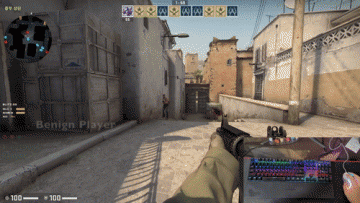
AI for detecting aimbots in FPS games
Read more
Origami-based deployable space shelter
Read more